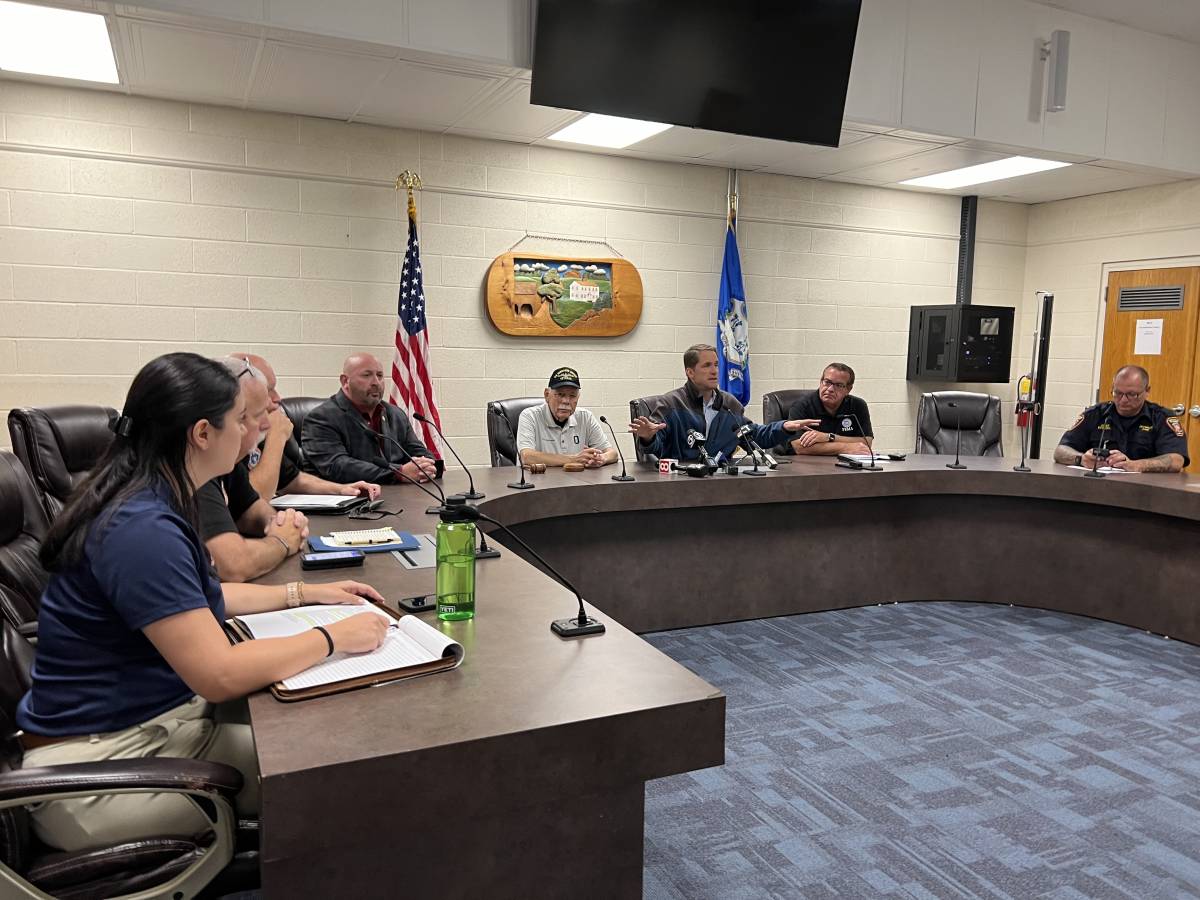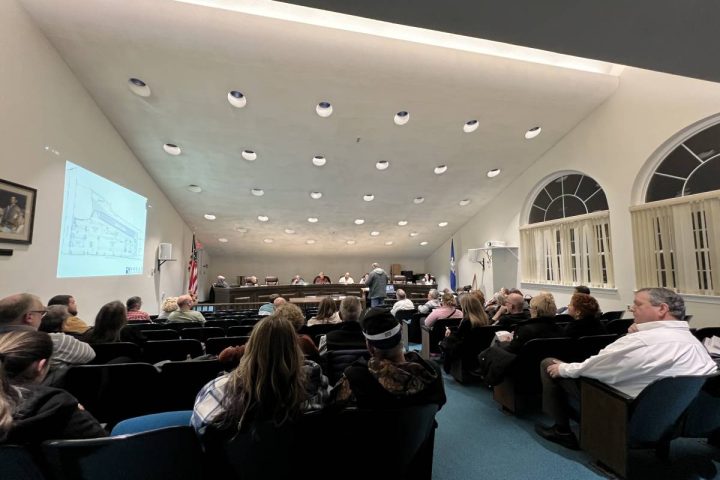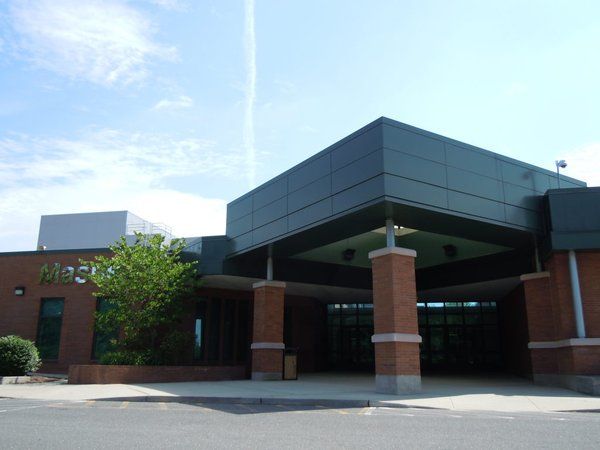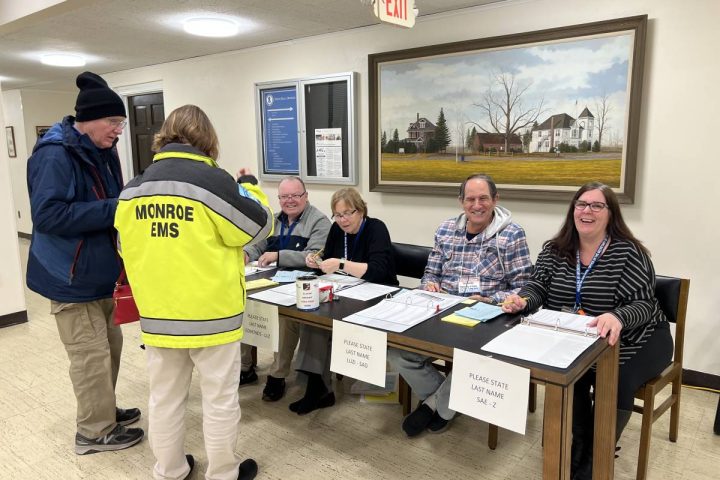OXFORD, CT — Two women, Ethelyn Joiner, 65, and Audrey Rostkowski, 71, died after being swept away by historic flooding in Oxford and the region, which caused massive destruction of roadways, railways, homes and businesses this past Sunday.
Destruction in Oxford led to closures on major roadways, including routes 34, 67 and 188. By Friday, highway workers had opened Route 42 to traffic, while they worked.
Oxford First Selectman George Temple and U.S. Rep. Jim Himes, D-4th District, arranged a public information session on disaster relief, led by a panel with FEMA and Division of Emergency Management and Homeland Security (DEMHS) officials, and representatives from Oxford, Seymour and Monroe.
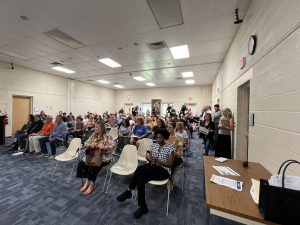 The room in Oxford Town Hall was packed with residents, law enforcement and public works officials as well as TV news crews Friday morning. Officials’ most critical message was the need to document property damage.
The room in Oxford Town Hall was packed with residents, law enforcement and public works officials as well as TV news crews Friday morning. Officials’ most critical message was the need to document property damage.
“I know we’re a group of people who suffered some significant losses, none more than the two women, Ethelyn and Audrey,” Himes told the audience.
He recalled the two tornadoes that came through Oxford in 2018. “That was a cakewalk compared to this,” Himes said.
Other officials at the information session also expressed their sympathy to the homeowners and business owners who suffered losses.
Bob Fogel, a federal coordinating officer with FEMA, recalled watching TV news footage of the massive flooding that hit the region last Sunday.
“I know you’ve been through hell. I said, ‘oh boy, I haven’t seen anything like that in this part of the state,'” Fogel told the audience. “We are so sorry for your losses, especially the two lives lost. I can’t say enough how looking at pictures doesn’t do it justice.”
Fogel said FEMA’s actions began last Sunday, as soon as calls were received from the DEMHS director. He said their first priority is life and safety.
Local municipalities, declared a state of emergency to DEMHS, as First Selectman Terry Rooney did in the town of Monroe. DEMHS shared the information with Governor Ned Lamont, who declared a state of emergency for civil preparedness on Monday.
This got the ball rolling for FEMA and other federal agencies to get involved, along with the Connecticut Department of Transportation and local public works departments to open roadways to traffic.
The Metro-North Railroad, which also had significant damage, counts toward the public threshold for damages.
Aside from a panel of speakers, literature was available for residents to take home with them Friday.
All officials urged residents and local business owners to document their damage in writing and with photos, so it can be collected, helping Lamont apply for an emergency declaration from President Joseph Biden.
If the governor decides to apply and Biden makes the declaration, FEMA will be authorized to release financial reimbursement to the public and individuals under the Stafford Act, according to Himes.
“We’re now in the stage of taking estimates of damage, so there is nothing more important than cataloguing it,” he said.
The threshold for public assistance for Connecticut is $6.6 million worth of estimated damage. Himes said thresholds must be met for every affected county, which is roughly $4 million a piece. For example, Fairfield County’s threshold is $4.4 million and New Haven County is just under $4 million.
Himes said it is possible for towns to receive 100 percent reimbursement, but it can be no less than 75 percent, to repair roads, bridges and other public infrastructure.
If federal assistance is opened up, there is no threshold for individual claims. A single homeowner can receive a maximum reimbursement of $42,500 two times.
Although not everything is reimbursable from FEMA, DEMHS officials on Friday’s panel encouraged homeowners to include all damage to paint a full picture of the disaster. This includes damage to motor vehicles.
“It’s really critical we document the damage done before it’s repaired,” Himes said.
Wayne Watt, Oxford’s public works director, said it is understandable how people may have to repair their driveways just to get out.
Bob Kenny, a regional coordinator for DEMHS’s Region 1, which represents Monroe, said not to fix the driveway so it is better than before, because FEMA will only look to restore it to its original condition before the storm.
Documenting losses
Monroe Police Chief Keith White said residents can access the DEMHS portal on the town of Monroe’s website and on the police department’s website to document their property damage. Here is a direct link.
A man in the audience said including gps coordinates is helpful, adding you can get those by taking a photo with your cellphone and sliding it up.
A woman asked about the residents who are not savvy online and may have trouble using the portal.
“You can call my office and someone will assist you with the damage report, because you’re right, there will be some people who aren’t comfortable with the portal,” Himes said.
The phone number for Congressman Himes’ office is 203-333-6600.
Residents were also urged to make insurance claims, even if they think they will be denied coverage. Those who receive insurance, may be eligible for reimbursement on their premiums should federal aid become available.
Someone in the audience asked about GoFundMe pages and the potential impact on the federal aid homeowners may be eligible for.
“Honestly, we don’t even look at that stuff, just the declaration and the data,” Kenny said.
Businesses
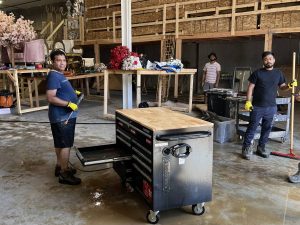
John Field, a regional coordinator for DEMHS’s Region 5, said business owners have a separate process, though he encourages them to provide information to the portal for a full picture of the disaster.
The Small Business Administration (SBA) helps businesses obtain low interest loans. Though no specific information was provided Friday, Field said SBA is already working closely with the Connecticut Department of Economic and Community Development, which is reaching out to businesses known to need help.
More information will be made available. The link to SBA’s website is here.
Field was joined on the panel by fellow DEMHS regional coordinators, Kenny and Nicole Velardi of Region 2.
Other public officials on Friday’s panel included Monroe First Selectman Terry Rooney, Oxford selectmen David McKane and Arnie Jensen and Seymour Fire Chief Chris Edwards.
Attending the meeting with White was Monroe’s public works director, Chris Nowacki.
Resources at Quarry Walk
Thomas Haynes, president of Haynes Group, which owns the Quarry Walk complex at 300 Oxford Road in Oxford, attended Friday’s information session at Oxford Town Hall. He invites business owners impacted by the floods to attend an expo on the green this Saturday from 9 a.m. to 4 p.m.
He invited professionals, from lawyers to contractors, to give advice on participants’ situations.
The main message public officials at Friday’s session tried to leave residents with is the importance of documenting damage.
After Himes shared the three programs for potential funding — public, individual and SBA — he said, “we’re not guaranteed any of them. What will determine what we get is the reporting to the state website.”
All respectful comments with the commenter’s first and last name are welcome.

